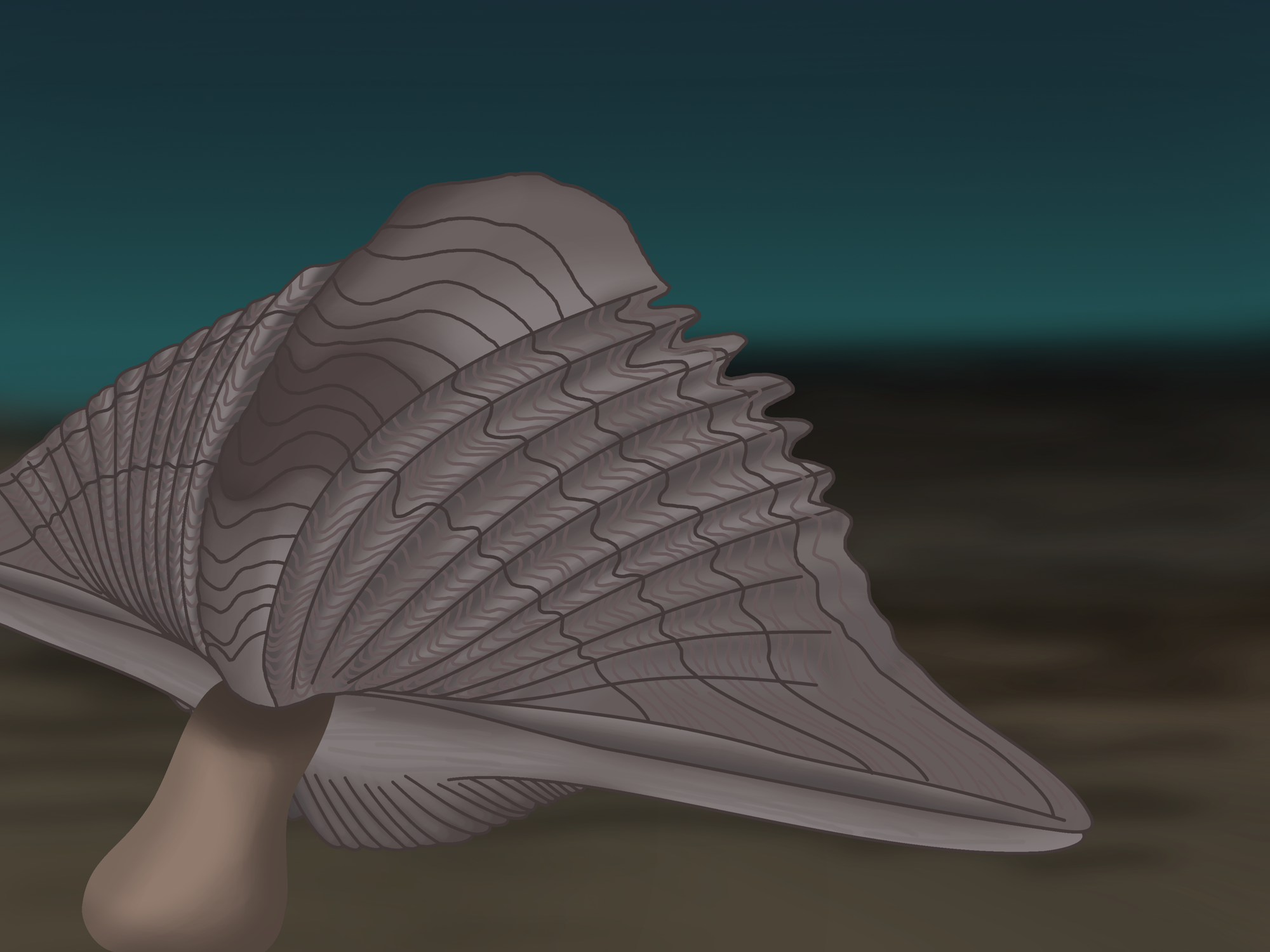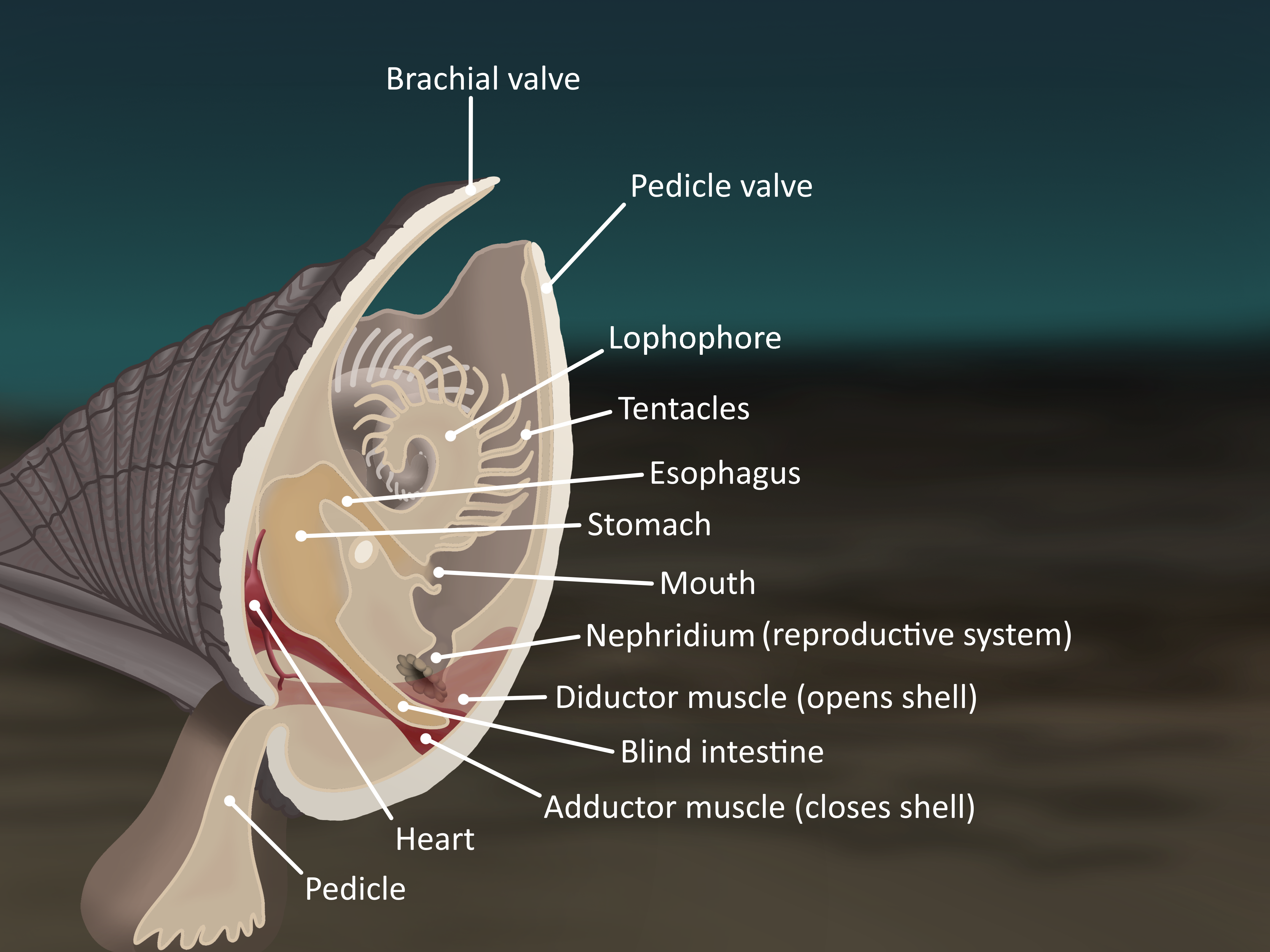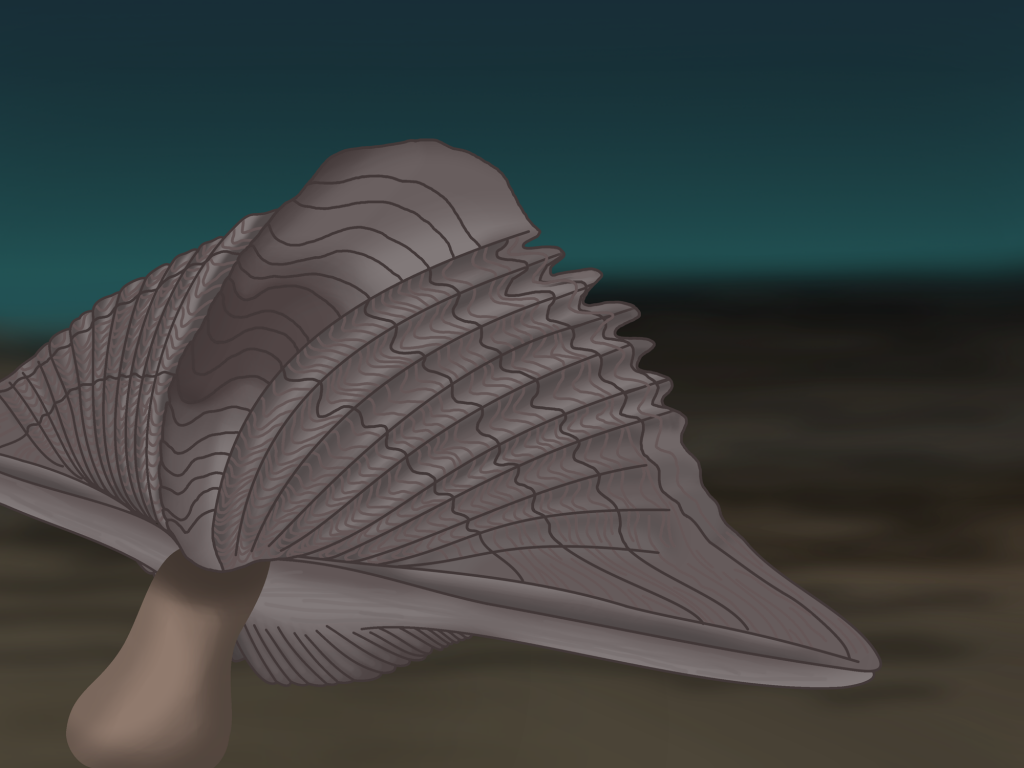
Brachiopods are one of the most common fossils found at Seven Stars. They were lophophorates, meaning that like Bryozoans, Tentaculitids, Phoronid worms, and Hyolithids, they used an organ called a lophophore to filter plankton and other food from the water(1,2,3,4,5). Some Brachiopods are still alive today, but in much diminished numbers – less than 5% of all known Brachiopod species are still alive, and these usually live in deeper water.
Brachiopods found at Seven Stars
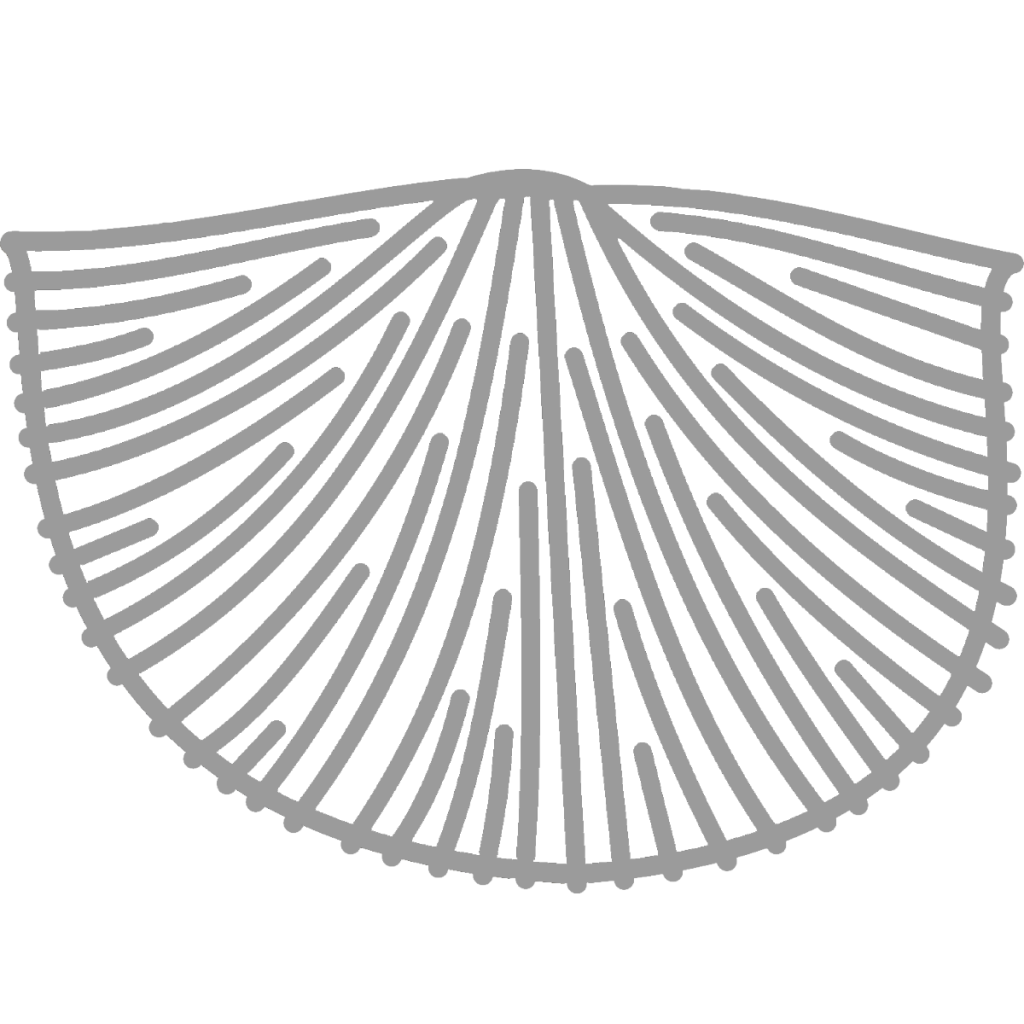
Devonochonetes coronatus
UNCOMMON
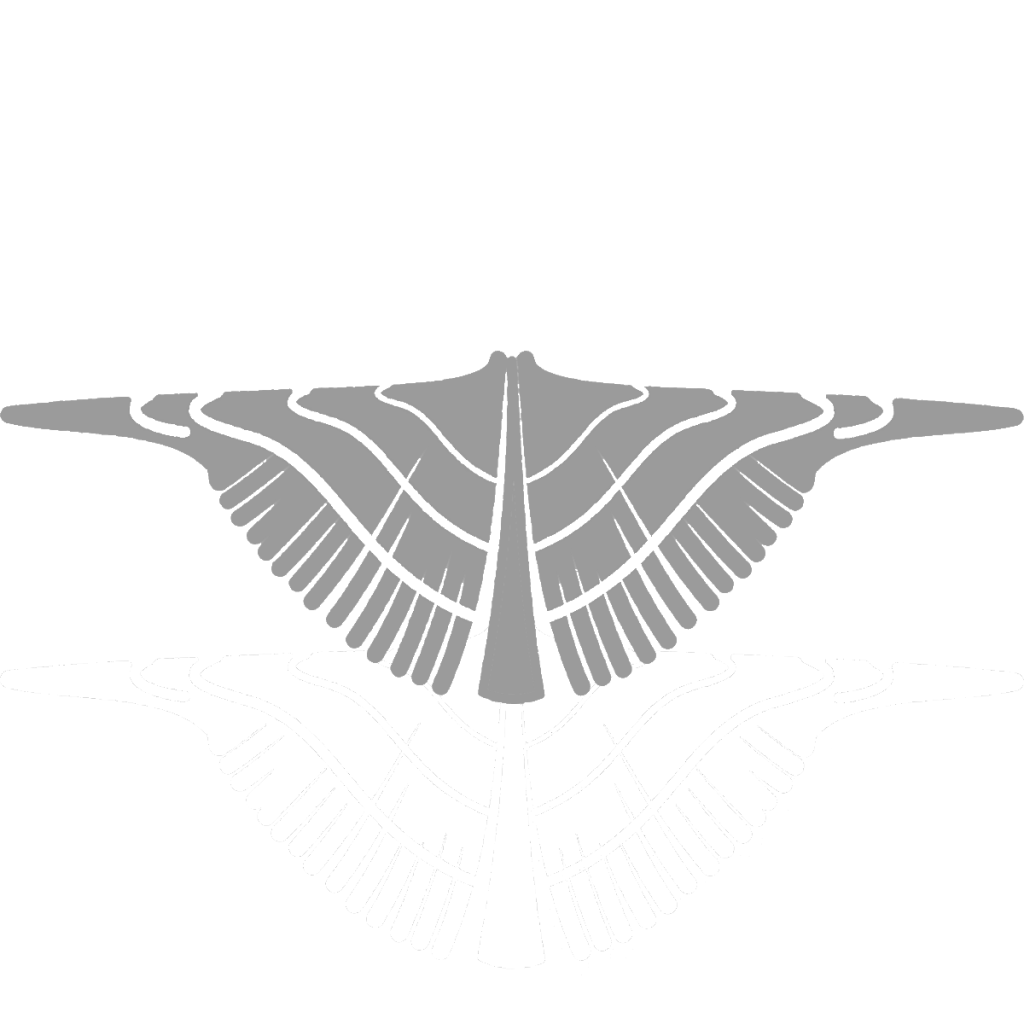
Mucrospirifer mucronatus
VERY COMMON
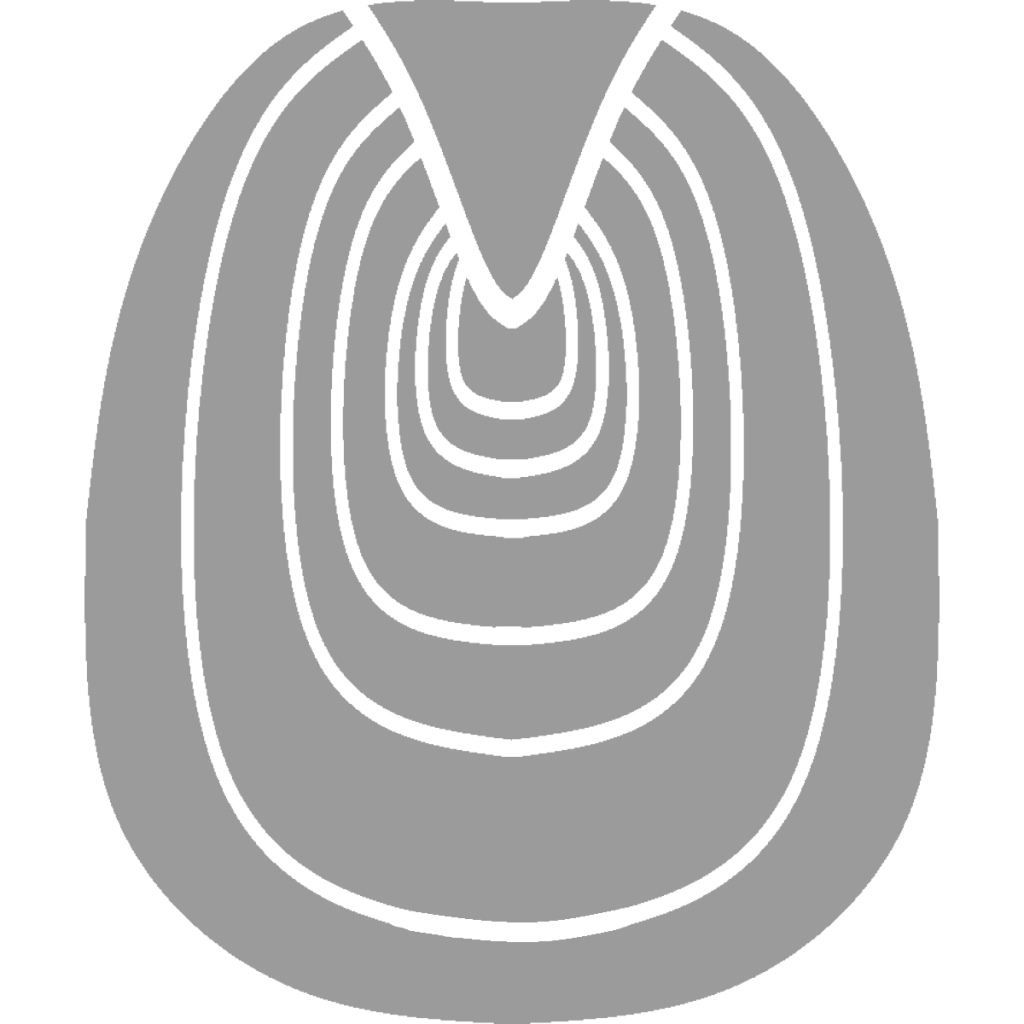
Orbiculoidea truncata
VERY RARE
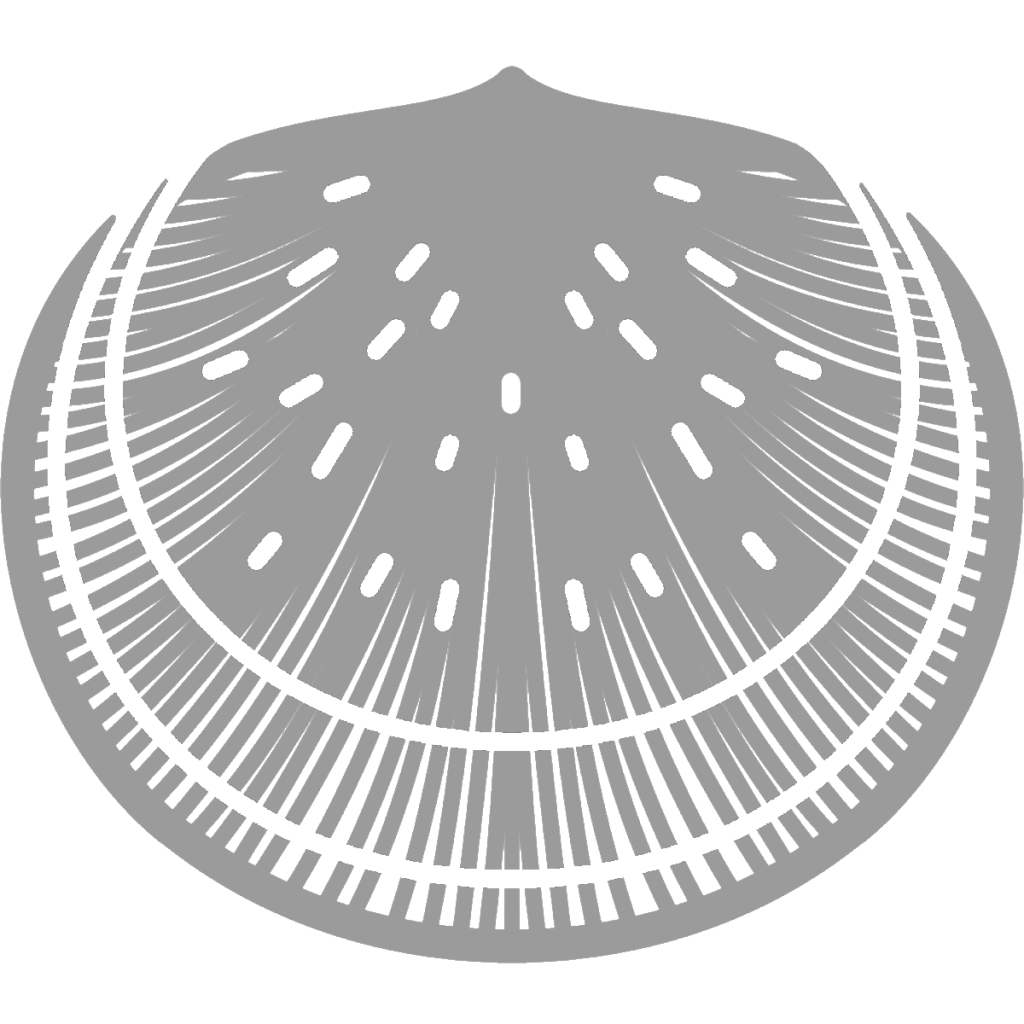
Rhipidomella penelope
COMMON
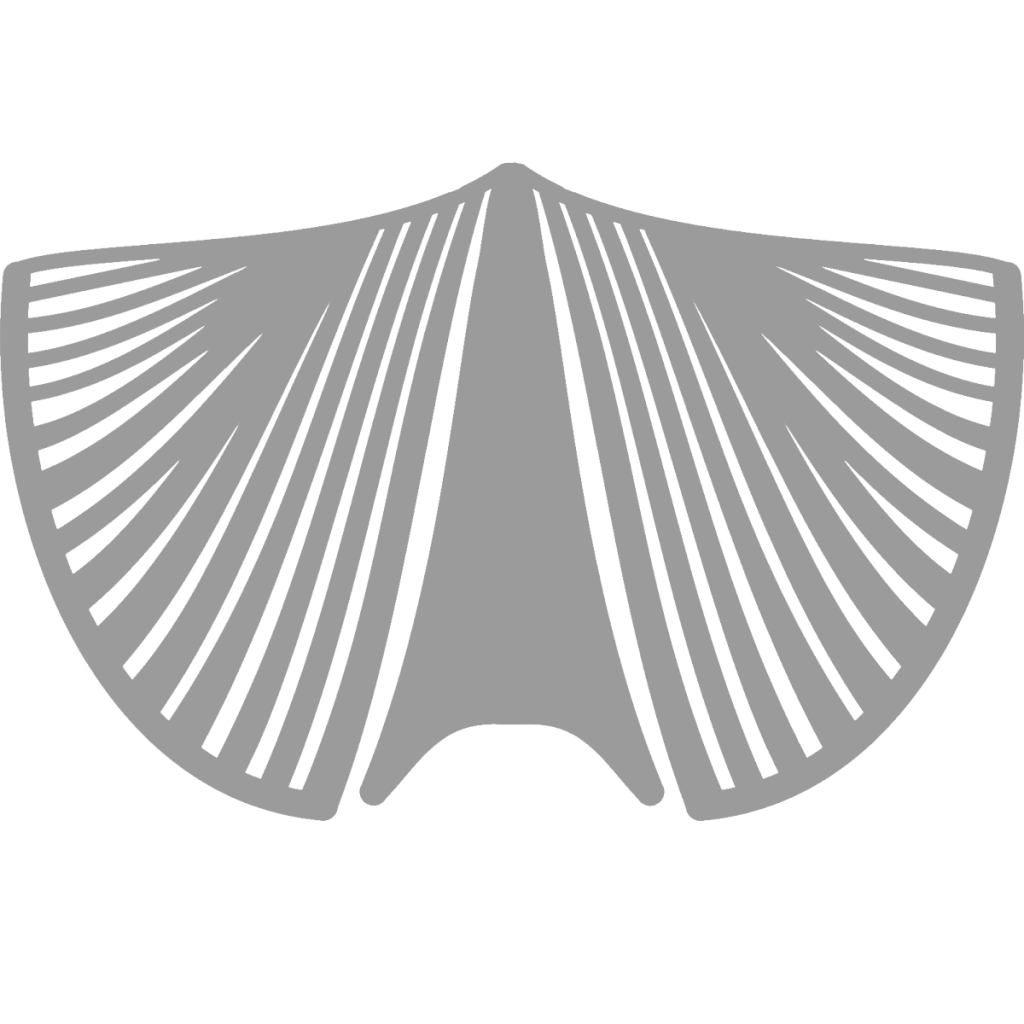
Spinocyrtia granulosa
UNCOMMON
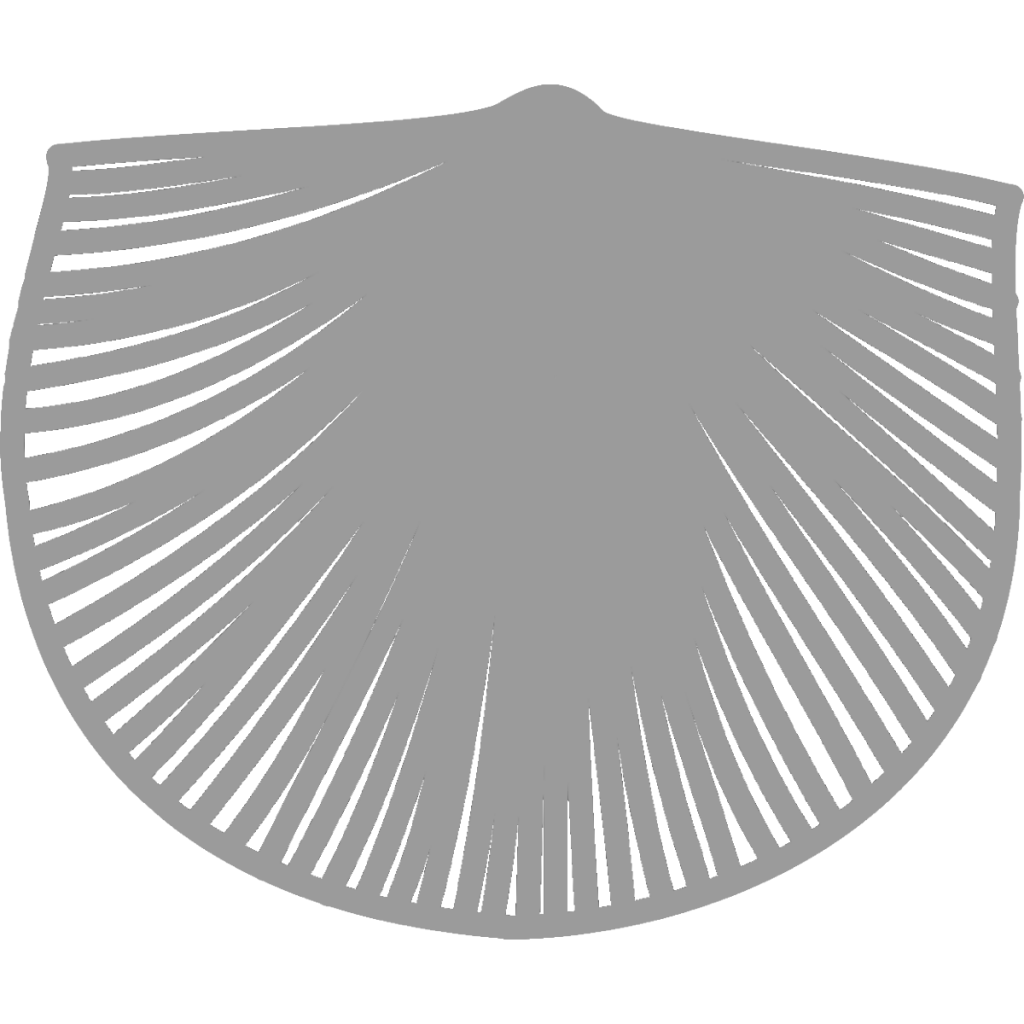
Strophodonta demissa
COMMON
How do I identify Brachiopods?
New fossil hunters often confuse Brachiopods with Bivalves, but they are easy to differentiate once their main differences have been established. Like gastropods and cephalopods, Bivalves are mollusks, and have two valves exactly the same shape – but each valve is itself asymmetrical. On the other hand, Brachiopods have two valves that are different shapes – a dorsal and a pedicle valve. Each valve is symmetrical (1).
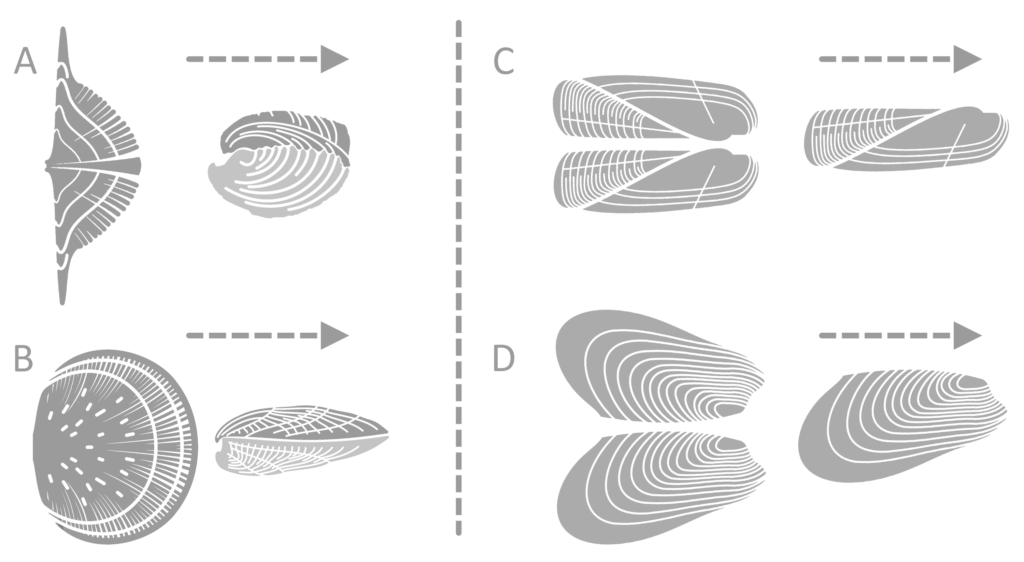
A: Mucrospirifer mucronatus.
B: Rhipidomella penelope.
C: Orthonota undulata.
D: Modiomorpha concentrica.
What were Brachiopods?
Brachiopods were lophophorates, like the Bryozoans, Tentaculitids, Phoronid worms, and Hyoliths (2,3,4). This means Brachiopods had a filtering organ, called a lophophore, to filter food out of the water. In Brachiopods this was supported by a spiral support called the brachidium that anchored to the shell. The Spirifrid Brachiopods, such as Mucrospirifer and Spinocyrtia, had very large brachidium (4). The lophophore held many tentacles, covered in beating cilia (9) . Together with these, the shape of the lophophore, and the shape of the shell, water was directed into a spiral path that let the lophophore pick up as much food and oxygen as possible (5). Water usually enters the mantle cavity from the sides of the shell and is directed out through the center (8, 9). In articulate Brachiopods (at Seven Stars, all Brachiopods except Orbiculoidea), the intestine ends without an anus and waste is expelled through the mouth (7).
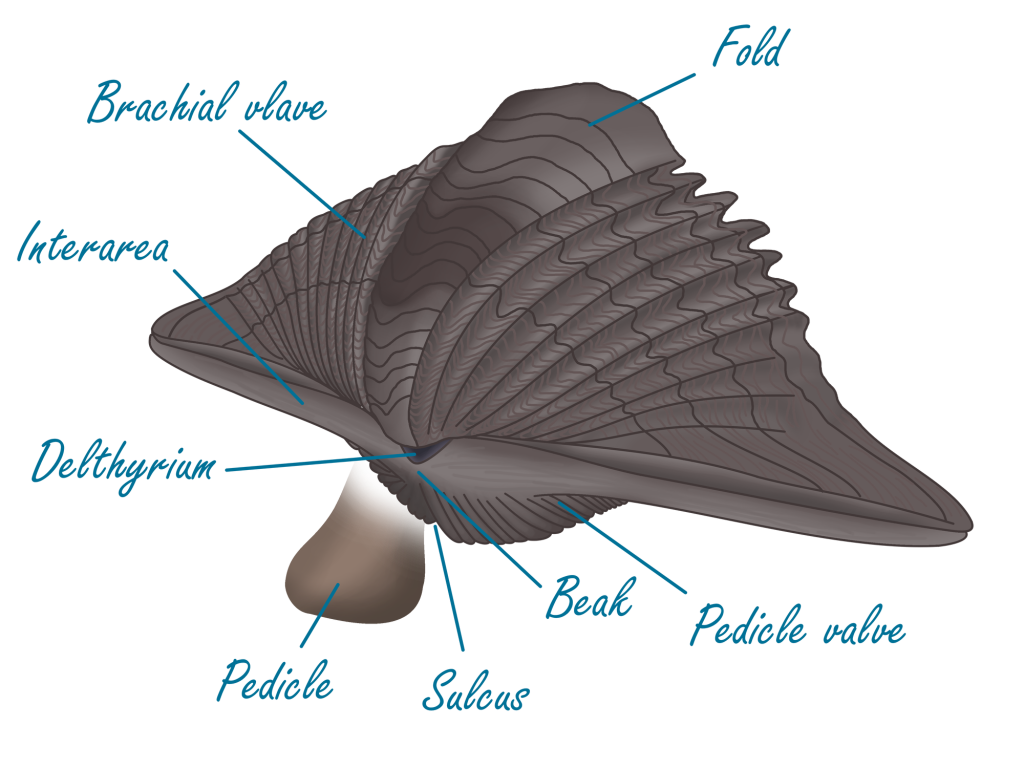
Brachiopods anchored themselves to the seafloor and other objects by way of the pedicle. This was a muscular foot that prevented the Brachiopods from being swept away in the strong currents. Brachiopods in different environments had different kinds of pedicles; in rockier environments, thicker, more muscular pedicles are common, and in sandier environments, more root-like pedicles are more effective. Modern lingulids have the latter type (4).
Because of their thick shells and little body tissue, Brachiopods wouldn’t have been the first choice for the predatory organisms at Seven Stars, with potential predators likely attacking only when they could not find other prey (4). However, other organisms like Bryozoans and encrusting corals have been found on Brachiopods at other sites, sometimes even securing their shells shut almost to the point of starvation (6).
Brachiopods at Seven Stars
Brachiopods, as stated above, were very common at Seven Stars. At least six species lived there, though some are easier to find than others. Some, like Devonochonetes, Rhipidomella, and Spinatrypa are easiest to find in hash plates, rocks whose upper surface is covered in small fossils like brachiopods and crinoid columnals. Below are descriptions of the brachiopods found at this site.
Devonochonetes coronatus
Devonochonetes can be easily mixed up with Strophodonta. However, its beak swells more and the shell is more inflated.

Mucrospirifer mucronatus
Mucrospirifer was one of the most common Brachiopods at Seven Stars. Unlike Spinocyrtia, it had long wing-like projections from its shell, and was less inflated. These projections helped Mucrospirifer stay in the proper feeding orientation (4).
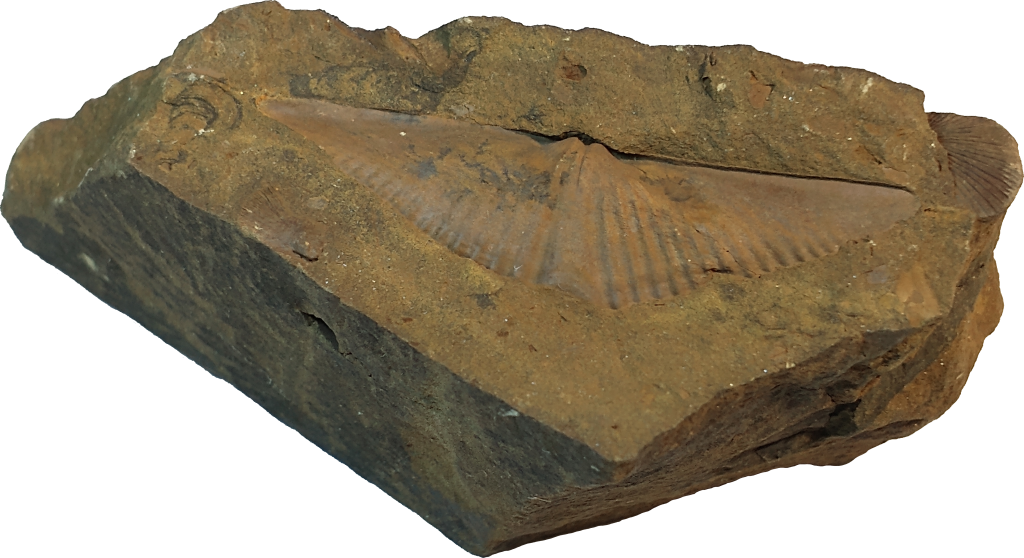
Orbiculoidea truncata
Orbiculoidea was the only inarticulate Brachiopod found at Seven Stars, but it was not common, with only a handful of specimens having been found. As an inarticulate, it had a very different shape than the other Brachiopods, and had a different lifestyle. Modern and extinct inarticulates (like Lingula) burrowed, using their long, root-like pedicles to pull themselves into their deep burrows. Because their valves were only held together by muscles, inarticulates could burrow effectively by sweeping their two valves side to side. (4).
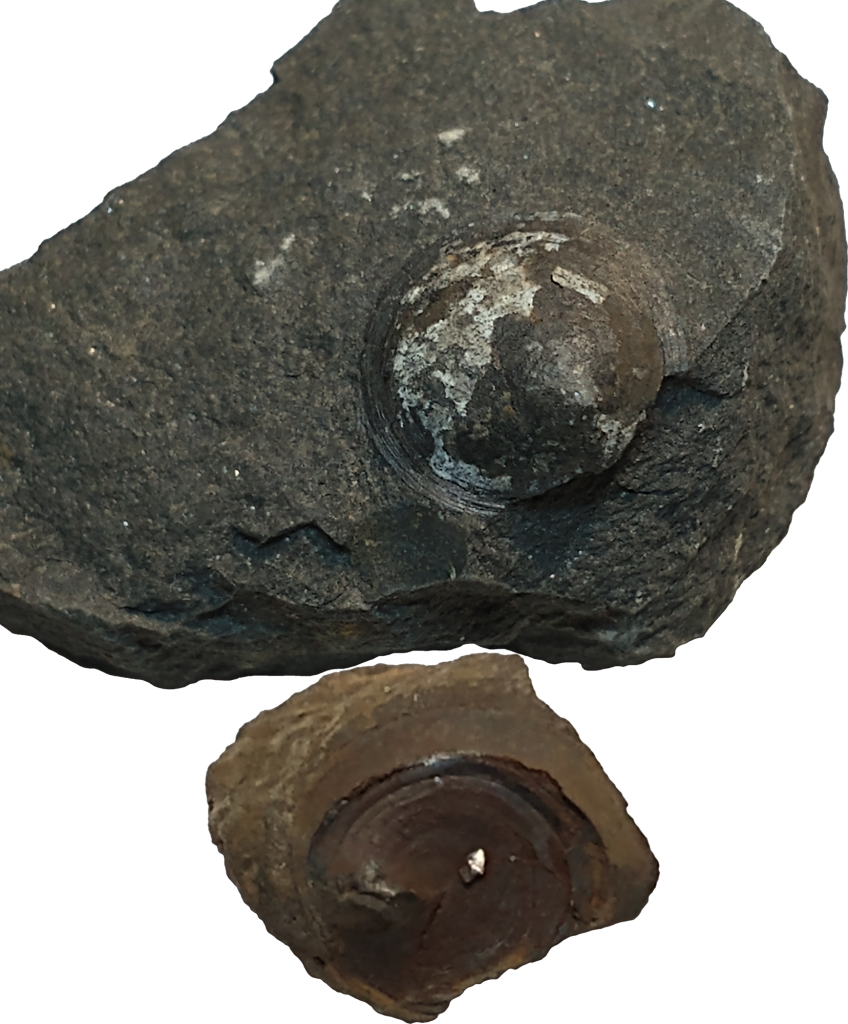
Rhipidomella penelope
Mostly circular, with fine growth lines.

Spinocyrtia granulosa
Spinocyrtia is similar to Mucrospirifer, but was more inflated and lacked wide wings.
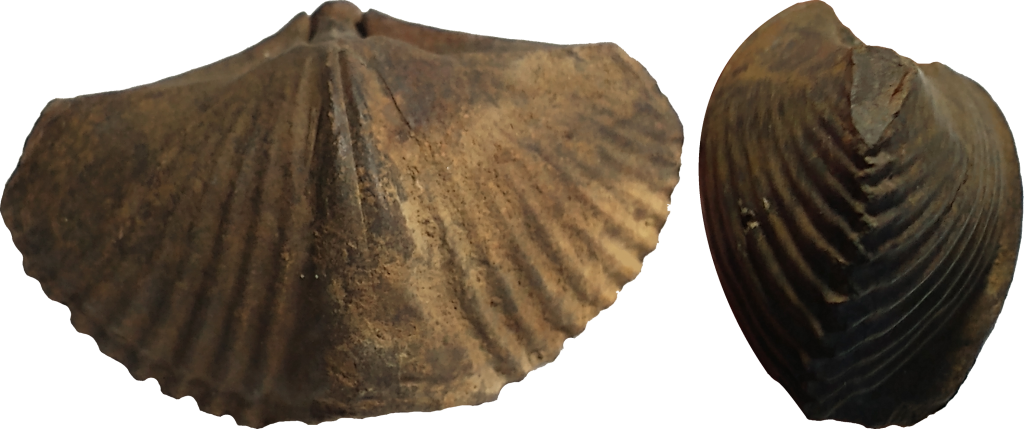
Strophodonta demissa
Strophodonta is harder to find at Seven Stars and can be easily confused with other species. It had sharp growth lines near the beak and was semicircular. More dorsoventrally compressed than Devonochonetes.
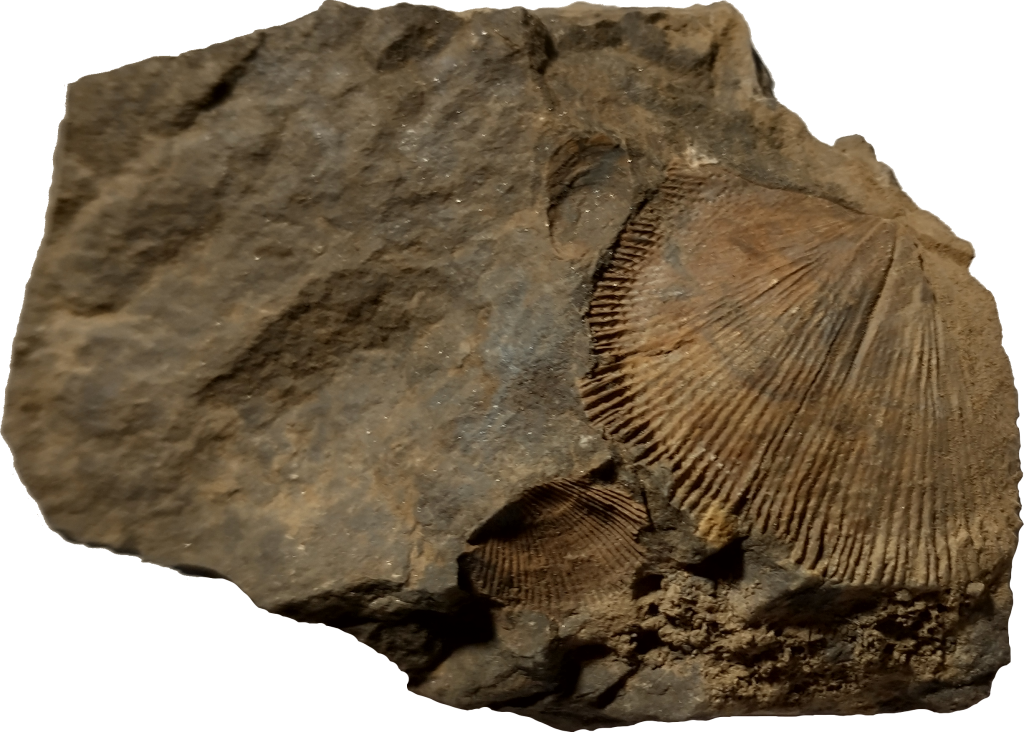
Works cited
(1) Wilson, K. A. (2014). Field guide to the Devonian fossils of New York (3rd ed.). Paleontological Research Institution.
(2) Vinn, O., & Zatoń, M. (2012). Phenetic phylogenetics of tentaculitoids – extinct, problematic calcareous tube-forming organisms. GFF, 134(2), 145–156. https://doi.org/10.1080/11035897.2012.669788
(3) Moysiuk, J., Smith, M. & Caron, JB. Hyoliths are Palaeozoic lophophorates. Nature 541, 394–397 (2017). https://doi.org/10.1038/nature20804
https://durham-repository.worktribe.com/preview/1371416/20195.pdf
(4) J.Q. Pier. 2019. Brachiopoda. In: The Digital Encyclopedia of Ancient Life. https://digitalatlasofancientlife.org/learn/brachiopodahttps://digitalatlasofancientlife.org/learn/brachiopoda
(5) Ito, Tsuyoshi & Yoshino, Takashi & Itaki, Takuya & Nishizono, Yukihisa & Matsuoka, Atsushi. (2017). Abstracts of InterRad XV in Niigata 2017 [Radiolaria (Newsletter of the International Association of Radiolarists), vol. 40]. Figure 2. https://www.researchgate.net/figure/Examples-of-brachiopod-morphology-and-function-A-Devonian-spiriferid-Paraspirifer_fig10_351335435
(6) Brach3. (2020). Show us your devonian epizoans pathological brachiopods. The Fossil Forum. http://www.thefossilforum.com/index.php?/topic/101678-show-us-your-devonian-epizoans-pathological-brachiopods/
(7) Bruno Pernet. (2022). Brachiopods. Ecology Center. https://www.ecologycenter.us/natural-history-2/brachiopods.html
(8) GEOL 331/BSCI 333 Principles of Paleontology Fall Semester 2022 Animals With Lophophores: Bryozoans and Brachiopods. University of Maryland Department of Geology, Fall 2022, www.geol.umd.edu/~tholtz/G331/lectures/331lopho.html. Accessed 18 Mar. 2023.
(9) Taylor, Paul D. and Lewis, David N. (2005). Fossil Invertebrates. Harvard University Press. https://archive.org/details/fossilinvertebra0000tayl
These resources were used in the reconstruction of the Brachiopods in this post.
The President and Fellows of Harvard College. (2023). Phylum Brachiopoda. In: Geologic Overview of the Trenton Group.https://trenton.mcz.harvard.edu/phylum-brachipopoda

